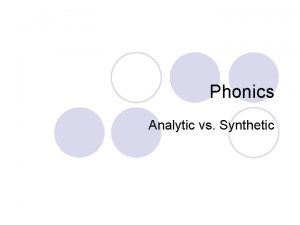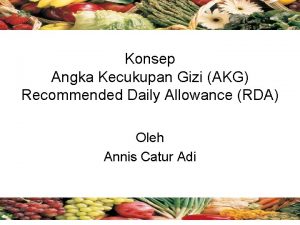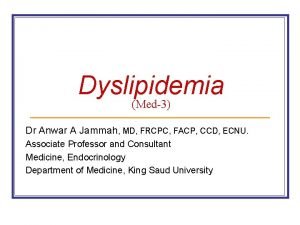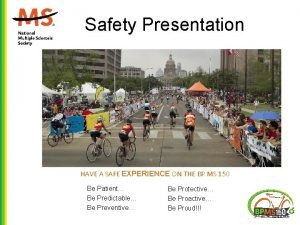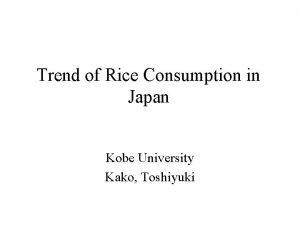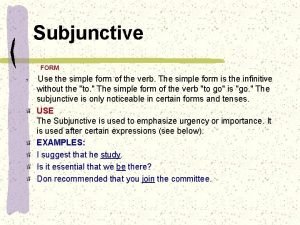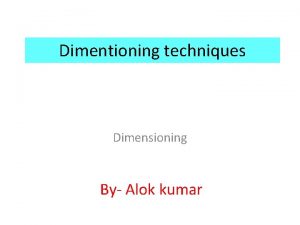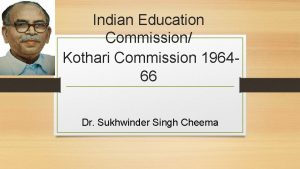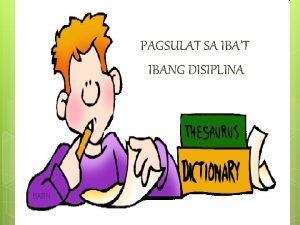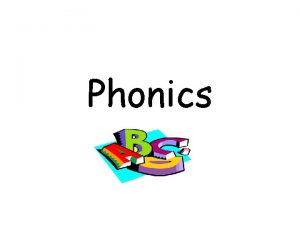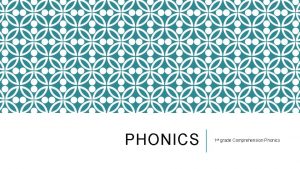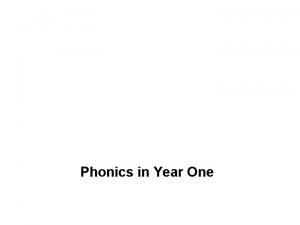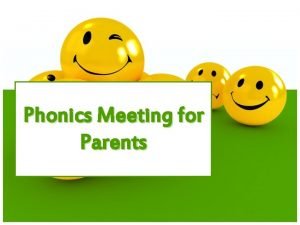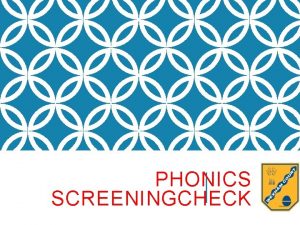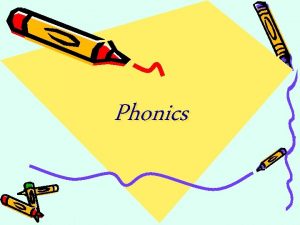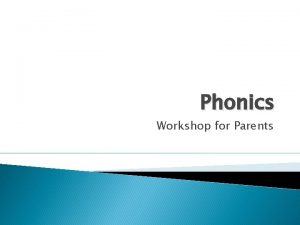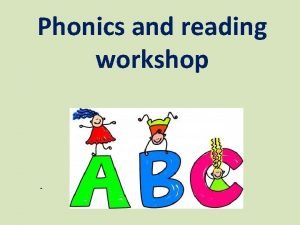What is phonics Phonics is recommended as the














- Slides: 14

What is phonics? Phonics is recommended as the first strategy that children should be taught in helping them learn to read. It runs alongside other teaching methods such as Guided Reading and Shared Reading to help children develop all the other vital reading skills and hopefully give them a real love of reading. Words are made up from small units of sound called phonemes. Phonics teaches children to be able to listen carefully and identify the phonemes that make up each word. This helps children to learn to read words and to spell words.

cat

Terminology Phoneme- a phoneme is the smallest unit of sound in a word. Grapheme- the written representation of a phoneme. 1 2 3 c a t b ir d f i sh kn igh t These words each have three phonemes (separate sounds). Each of these phonemes is represented by a grapheme. A grapheme may consist of on, two, three or four letters. Digraph- a diagraph is a two- letter grapheme where two letters represent one sound such as ‘ea’ in seat and ‘sh’ in ship.

It’s important to pronounce each phoneme the correct way otherwise it makes it harder for children to hear the sounds in the word. For example: Muh+ ah+ tuh= muhahtuh If you use the phoneme it is easier for children to sound talk the phonemes and blend them to read the word. M+a+t= mat Lets listen and join in with the phonemes

cat dad map moon mum bag rocket light

First steps for children- model listening and speaking. • Encourage talking- this helps children to develop language and explore new language. Allow children time to think about what has been said, gather their thoughts and construct their replies. • Model good listening- show your child how to make good eye contact with the person speaking, ask questions, repeat back to confirm, comment on what has been said and give lots of opportunities for communication. • Good models of spoken English- expand vocabulary, structure sentences, speak with confidence and clearly, sustain dialogue. We use the Letters and Sounds programme to teach high quality systematic phonics teaching. This comprises of six structured phases.

Phase 1: General sound discriminationsenvironmental sounds e. g. Listening walks, instrumental and body percussion. Rhythm and rhyme e. g. Nursery rhymes Alliteration Voice sounds Oral blending and segmenting Phase 2 Begins the introduction of grapheme- phoneme correspondences (GPCs). Decoding for reading and encoding for spelling are taught as reversible processes. As soon as the first few correspondences have been learned, children are taught to blend and segment with them. Blending means merging the individual phonemes together into whole words; segmenting is the reverse process of splitting up whole spoken words into individual phonemes. This is primarily single letter phonemes (sounds). Set 1: s, a, t, p Set 2: i, n, m, d Set 3: g, o, c, k Set 4: ck, e, u, r Set 5: h, b, f, ff, l, ll, ss

Phase 3 Single letter phonemes are completed at the beginning of this phase, completing the end of the alphabet. Digraphs are also introduced during this phase (two letters making one sound). And trigraphs at the very end of the phase (three letters making one sound). Set 6: j, v, w, x Set 7: y, z, zz, qu Consonant digraphs: ch, sh, th, ng Vowel digraphs: ai, ee, igh, oa, oo, ar, or, ur, ow, oi, ear, air, ure, er This phase also introduces the children to their first concept of a ‘tricky’ word. These are words which can not be decoded by using their understanding of phonemes. High frequency words are also introduced. These are words which the children are commonly exposed to but which are inconsistent with their experience of letter sounds. This phase is taught within Reception.

Year 1 At the beginning of Year 1 we begin by recapping Phase 3. These are usually sounds which the children have demonstrated having difficulties identifying or pronouncing accurately. We then move onto… Phase 4 When children start Phase Four of the Letters and Sounds phonics programme, they will know a grapheme for each of the 42 phonemes. They will be able to blend phonemes to read CVC (consonant-vowel-consonant) words and segment in order to spell them. Blends are then formally introduced at this stage. These are sounds which have two single letter phonemes that when heard can be difficult to identify separately. E. g. bl, fl, dr, sp, st, br…. . The main aim of this phase is to consolidate the children's knowledge and to help them learn to read and spell words which have adjacent consonants, such as trap, string and milk. Children will also continue reading straightforward two-syllable words and simple captions, as well as reading and spelling tricky words.

Year 1 Phonics Intro – Recap of graphemes and their connected sounds. New grapheme and phoneme introduced. Practise Activity – Reading or Writing Based completed as a whole class. Apply – Differentiated activity at their tables based upon the day’s new sound. Usually reading or writing based.

Year 1 The children are also expected to be able to read and spell the first 100 high frequency words by the end of Year 1. The majority of which also being able to spell the many of the next 200 high frequency words. These are usually given as homework as to not confuse with phonics teaching which encourages the children to ‘turn on their ears for the sounds’. These are given on a Thursday and tested before the following Wednesday, timetable dependant. These results are photocopied and stuck in your child’s homework book. Before the end of every half term these words are retested to ensure they have been retained. Children then move on or recap accordingly.

Phase 5 When the children have completed Phase 4 and have secured skills in segmenting and blending two syllable words, they begin Phase 5. Children entering Phase Five will already be able to read and spell words with adjacent consonants, such as trap, string and flask. They will also be able to read and spell some polysyllabic words (words containing more than one syllable). In Phase Five, children will learn more graphemes and phonemes. For example, they already know ai as in rain, but now they will be introduced to ay as in day and a-e as in make. They explore these new GPCs (grapheme-phoneme-correspondences) within its own right and then complete activities which encourage the children to compare and find rules (where possible) for these new digraphs. Alternative pronunciations for graphemes will also be introduced, e. g. ea in tea, head and break.

Phonics Check All children have to have a secure understanding of Phases 3 -5 before the end of Year 1 when they complete their Phonics Check. This is a test administered by the Government for all Year 1 children to complete. It is taken on a one-to-one basis. The child’s final pronunciation of the word on the page is the one noted. The test is a mixture of 30 real and pseudo (fake) words. These pseudo words are identified by an alien representation next to the word. This is aimed to ensure that the children are using skills in decoding, not only sight vocabulary which requires previous exposure to the word. Further information on this will be provided after Easter. keam

Phonics Check Previous words contained within the Phonics Check have been: whape diving yair midnight rice thrant sprop river glued strow
 Analytic vs synthetic phonics
Analytic vs synthetic phonics Nsf proposal status recommended
Nsf proposal status recommended Herold merisier
Herold merisier Rda kalori anak
Rda kalori anak Recommended
Recommended Https //accenturedeliverysuite.accenture.com
Https //accenturedeliverysuite.accenture.com Ms 150 recommended rides
Ms 150 recommended rides Japan rice consumption
Japan rice consumption Subjunctive mood examples
Subjunctive mood examples Unidirectional system of dimensioning
Unidirectional system of dimensioning Kothari commission aims of education
Kothari commission aims of education Advocator of learning without burden
Advocator of learning without burden Mudaliar commission 1952
Mudaliar commission 1952 Explain when rtv and anaerobic sealers are recommended.
Explain when rtv and anaerobic sealers are recommended. Halimbawa ng layunin
Halimbawa ng layunin
